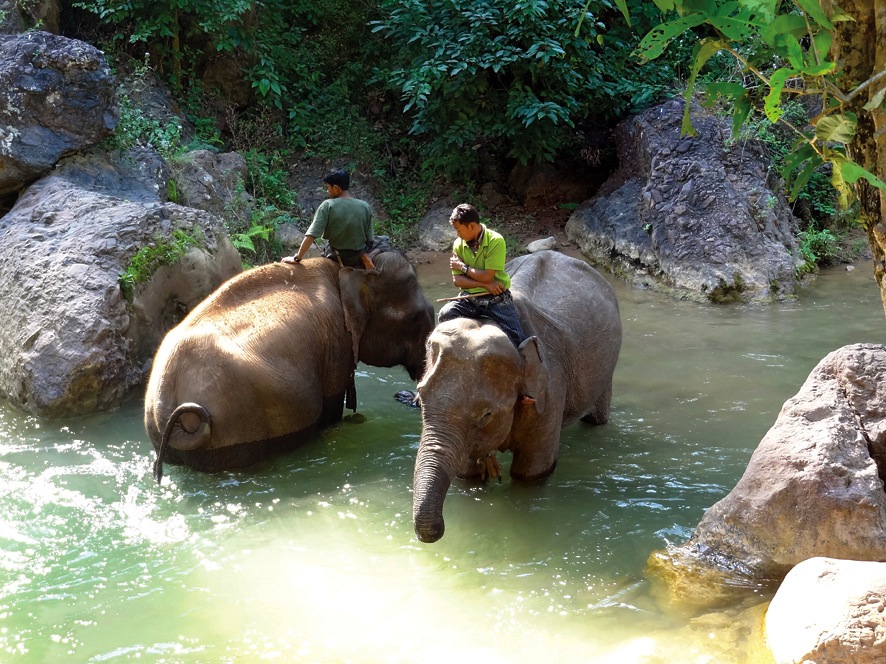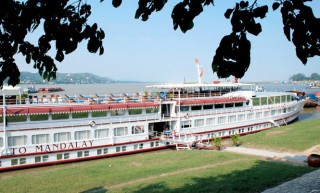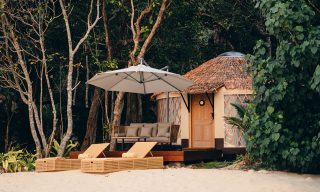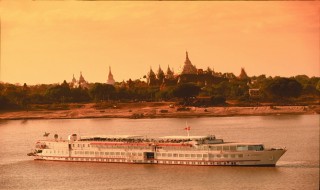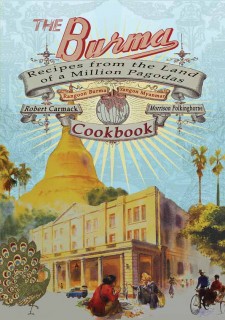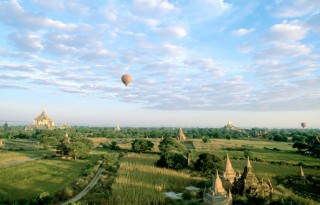After the planting ceremony, we returned to the main area of the camp, where our two scrubbed and gleaming elephants had been joined by the other five pachyderms that call Green Hill Valley home. Five of the seven—including the two that had belonged to Maw’s family—are females ranging in age from 38 to 62. One is a 49-year-old male. All are re-tirees from the Myanmar logging industry.
Phoe Chit has a different history. He is a four-year-old orphan from a conflict area of the country. “He is our spoiled baby and everyone loves him and cares for him as he has no mother,” Maw explains. “He weighed almost one ton when he arrived here, but he is much heavier now.”
No surprise there—elephants love to eat, as we observe when we feed them bananas provided by the camp, handing the fruit to eager, uncoiled trunks or popping them into triangular pink mouths. Feeding these gentle giants was almost as much fun as washing them. Each elephant has his or her own personality: some would grab the fruit right out of our hands; others would pluck it delicately. Some preferred to take the offerings with their trunk; others opened their mouths in an unmistakable pantomime of “feed me.”
When it’s time to accommodate our own appetites, we grab a table in the bamboo-walled dining area, which opens onto a terrace furnished with lounge chairs and sun umbrellas. It creates a perfect frame for the panorama that gives the camp its name: green hills dotted with teak, bamboo, and acacia trees dipping into a soft greener valley, punctuated by darting butterflies and the occasional birdcall or monkey screech. It also seemed an appropriate backdrop for our Nepalese-tinged meal of dosas, curries, condiments, and baked bananas (what else?) for dessert. The Nepalese influence is due to the Gurkhas who came here from Nepal during British rule and stayed on after independence; Wynn himself is 25 percent Gurkha.
“We trained local girls from the village to cook and now they handle every aspect of the lunch,” Maw notes proudly, adding that the girls take lessons in English during the slow season, when they have more time to study. Last year, Green Hill Valley also inaugurated the first primary school in Magwe.
The camp could conceivably add a few more elephants, Maw says, but the maximum number would be 10. “We are just a small family-owned private camp, not an international NGO,” she points out. But she and her husband would be happy to share their experience with others interested in setting up elephant camps. “We would also be happy to share our cooperative work with others,” she adds.
If that happiness is as infectiously shared as the joy of elephant-washing is for visitors, the prospects for future elephant camps in Myanmar are gleaming indeed.
The Details
Anyone interested in visiting Green Hill Valley (95-9/7310-7278) should contact the camp at least one day in advance. Four different tour programs are available, ranging in price from US$100 to US$180 per person, depending on the size of the group and the time of year.
This article originally appeared in the April/May 2014 print issue of DestinAsian magazine (“Trunk Call”).

